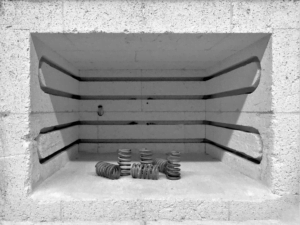To ensure optimal functionality and prolonged lifespans for springs, manufacturers rely on a crucial process called heat treating. In this blog post, we will delve into the fascinating world of spring heat treating, exploring its significance, methods, and benefits it brings to these essential mechanical components.
The Role of Heat Treating Springs
When manufacturers form springs, they create residual stresses within the wire, making the spring susceptible to failure. For example, a compression spring experiences inner surface tension and outer surface compression due to these residual stresses. Heat treatment is one of the most common methods to alleviate these stresses.
Benefits of Heat Treating Springs
- Enhanced Durability: Heat treating alters the material’s structure, significantly enhancing the spring’s hardness and toughness, making it less susceptible to wear, fatigue, and deformation over time.

- Optimal Performance: Heat treating eliminates residual stresses through processes like presetting and shot peening, optimizing the spring’s elastic properties and contributing to exceptional performance.
- Increased Strength: Heat-treated springs exhibit improved strength and hardness, enabling them to withstand higher loads and stress without experiencing permanent deformation or failure.
- Extended Cycle Life: Heat-treated springs operate with lower material stress, allowing for an increased lifespan before requiring replacement or maintenance.
- Reliability: Heat-treated springs maintain their mechanical properties over time, ensuring consistent and reliable performance throughout their operational life.
Methods of Heat Treating Springs
Manufacturers use several methods to heat treat springs, tailoring each to achieve specific results based on the spring’s material and intended application. The most common methods include:
- Stress Relieving: Manufacturers perform this critical process to improve spring performance. They heat the spring at a low temperature, well below the recrystallization temperature, for a specified duration. This effectively removes stresses introduced during cold forming while preserving the spring material’s tensile properties.
- Annealing: Manufacturers typically reserve this method for larger diameter wires experiencing substantial stress during forming. They heat the spring above the material’s recrystallization temperature for a specified time before cooling it gradually. The process reduces internal stresses but also results in a reduction of material strength and hardness.
Partner with Gifford Spring Company
Since 1984, our company has made it our mission to provide customers with top-quality services throughout every stage of spring manufacturing. We take pride in helping you attain new levels of success by scaling your custom springs and are honored to have many customers choose us as their full-service custom spring manufacturer. Contact us for a quote and experience the difference of working with Gifford Spring Company!